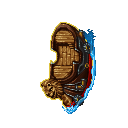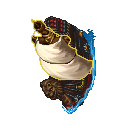Ravendawn Ships

Ravendawn Ships
At the core of Ravendawn's design lies a fundamental principle: infinite customization. This principle, considered by many as the most crucial, doesn't just apply to character creation but extends to the seafaring experience in this vast world. In Ravendawn, ships are much more than mere vessels; they are customizable extensions of each adventurer's identity.
The freedom to interpret your character as you wish is impressively mirrored in ship customization. The idea is to provide the least amount of limitations, allowing players to immerse themselves in an ocean of possibilities.
Ships in this unique universe transcend their basic function. They are authentic masterpieces, reflecting the creativity and tastes of their captains. From structural design to decoration, every detail can be tailored to create a truly unique maritime experience.
Imagine an elegant sailboat with sails adorned with custom emblems or a formidable warship with intricate details representing its captain's epic history. In Ravendawn, customization knows no bounds; even the technical features of ships can be adjusted based on individual preferences.

Ship Components in Ravendawn
In the world of Ravendawn, ships are intricately crafted with five key components that shape their functionality and purpose:
1. Hull: At the heart of every ship is its hull, the foundational element influencing various aspects. It determines the overall weight capacity of the vessel and provides essential support for specific accessories. The hull's basic statistics impact the ship's characteristics, be it speed, maneuverability, stealth, or combat prowess. The Alpha release introduces four distinct hulls: the Merchant Hull (emphasizing cargo capacity), Fishing Hull (specialized for fish transport), Clipper Hull (designed for exploration and agility), and Galleon Hull (tailored for naval warfare). While the hull guides the ship's capacity, its significance is part of the broader picture shaped by other chosen components, allowing for diverse and hybridized approaches.

2. Sails: Velocity becomes the essence with sails that define the ship's speed and agility. Larger, more robust sails propel the vessel forward at a faster pace, albeit with considerations. A substantial mast, while enhancing speed, introduces additional weight that impacts the ship's ability to maneuver swiftly.

3. Cabin: Beyond a mere physical space, the cabin component provides room for transporting diverse cargo—be it trade goods, substantial catches hung on backward-facing hooks, or the option to leave it empty for reduced weight. It becomes the canvas for a variety of accessories, ranging from large hooks for colossal catches to double hooks for dual medium-sized loads, or additional storage for trade packages. The versatility of the cabin allows captains to tailor their ships to their preferred style and needs.

4. Auxiliary: The Auxiliary component stands as a pinnacle of diversity among ship accessories. Offering a myriad of options, from additional cannons to reinforced plates, nets, and emblems, captains can define the purpose of their vessel. Variations within these choices, such as griffin cannons, siege cannons, serpent cannons, and more, provide a nuanced approach to ship customization, allowing captains to manifest their intended use and strategic preferences.

5. Rudder: Steering the ship's course is entrusted to the rudder, a crucial element particularly in naval engagements. While a larger rudder facilitates quicker turns, it introduces a trade-off—additional weight and a reduction in the overall maximum speed of the ship. Captains must carefully balance the advantages of nimble maneuvering against the potential sacrifice in speed when selecting their rudder.
Dynamic Ship Turning and Acceleration Mechanics
In the world of Ravendawn, the sailing experience goes beyond simple static commands, delving into the realistic dynamics of maritime movement. The mechanics of turning and acceleration are designed to reflect the complexity and authenticity of navigation. Here are some key features:
1. Nautical Inertia: Ships don't come to a sudden halt or reach their maximum speed instantly. Nautical inertia plays a crucial role, requiring time for a ship to gain momentum and speed. This realistic aspect not only adds depth to the sailing experience but also introduces a strategic layer to naval encounters and tactical maneuvers.
2. Tailwind Advantage: Ship speed depends not only on intrinsic characteristics but also on the wind. Sailing with a tailwind can increase speed and acceleration, providing a more immersive and dynamic maritime experience. Adapting to wind conditions becomes a crucial skill for captains in Ravendawn.
3. Maneuvers and Conflicts: High-sea maneuvers and naval conflicts are not just matters of strategy; they directly affect the speed and acceleration of the ship. Changing course in the midst of a confrontation can be a risky but sometimes necessary tactic. The ability to dynamically adapt to the situation is essential, as decisions made during conflicts will have a direct impact on the ship's performance.

